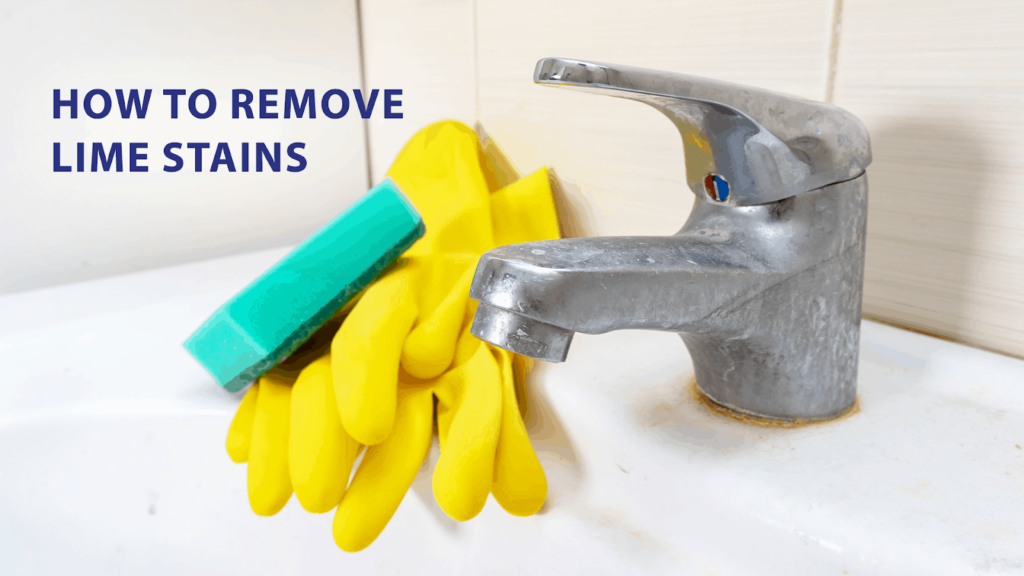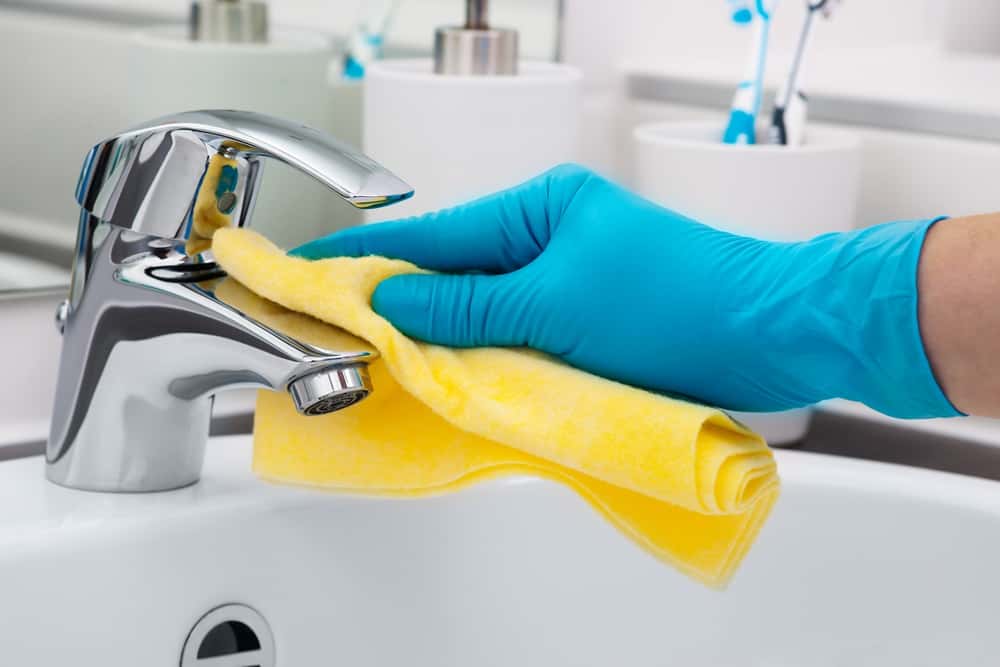Limescale is a significant problem in hard water areas. If you are in the U.S. use this map to know if your area is affected by water hardness.
In this blog, we dive deeper into how limescale occurs and how to tackle it permanently.

Understanding Limescale Formation and Calcium Carbonate
Hard water contains large amounts of calcium and magnesium. These minerals precipitate when water heats up and evaporates, leaving mineral deposits.
The white chalky texture formed is called limescale, scientifically known as calcium carbonate. Limescale can stain sinks, fixtures, and tiles.
Limescale deposits can also affect various electronic appliances (kettles, dishwashers, washing machines, and water heaters) and reduce energy efficiency. Over time, this may lead to costly repairs and replacements.
Related: Learn more about filtering hard water here.
Why is Limescale a Problem?
While not harmful, limescale harbors bacteria making water quality poorer. It is a root cause of many long-term problems in households:
- The dull white film makes surfaces look dirty and unkempt.
- Surfaces feel rough and unpleasant to the touch.
- Limescale build-up damages appliances.
- Pipes and showerheads clog over time, reducing water pressure.
Natural Solutions For Limescale Removal
If you enjoy DIY hacks, you can use lemon juice and white vinegar to tackle limescale.
Caution: Wear gloves and protective clothing to avoid skin irritation.
Lemon juice: Citric acid is a natural descaling agent that can dissolve limescale. It also leaves behind a refreshing scent.
White vinegar: Acetic acid is equally potent in breaking down limescale. Use distilled white vinegar, not malt vinegar to avoid staining surfaces.
Here’s a step-by-step guide:
- mix equal parts white vinegar and water in a spray bottle
- spray on the surface and let it sit for 30 minutes
- wipe clean
For tougher areas:
- soak a tea towel in white vinegar
- wrap it around shower heads or taps
Baking soda paste also works well.
- apply and gently scrub to remove buildup and deodorize.
- Add a few tablespoons of citric acid in water for tougher deposits
A few drops of essential oils like tea tree provides a pleasant scent.
Chemical Cleaners Which Remove Limescale
Chemical cleaners are a great option for quicker cleaning and less mess. Here’s a list of the top 10 limescale removers you can order online.
You can spray these products directly or use a soaked cloth to clean the affected areas. Make sure to read the application instructions carefully to avoid unintended surface damage.
Caution: Chemical cleaners should be used with gloves, goggles, and adequate ventilation.
Try Point-of-Use Water Filters To Prevent Limescale
Point-of-use water filtration systems can effectively limit limescale issues in your kitchen and bathrooms.
If you want to keep your kitchen sink and electrical appliances free of limescale, consider installing a faucet-mounted water filter. Ideal for kitchens, this filter attaches to your faucet and reduces contaminant levels at the tap, ensuring cleaner water for drinking and cooking.
Worried about tap water contaminants? Learn more about water contaminants in PureFlowz full-length guide.
Filtered water helps minimize limescale in kettles, coffee makers, and other kitchen appliances.
In case your kitchen pull-out faucet is not compatible with faucet-mounted filters, try our water filter pitcher. Its dual-stage filtration process includes PP cotton, activated carbon, and ion exchange resin, efficiently removing impurities while retaining essential minerals for a refreshing, balanced taste. Learn more about benefits of cooking with filtered water here.
- Effectively removes chlorine, heavy metals, and other contaminants.
- Improves water taste by eliminating odors and impurities.
- Softens hard water to minimize limescale issues.
- Filter replacement indicator for timely maintenance.
- Available in customizable colors to match your kitchen style.
Installing a shower filter prevents minerals from clogging showerheads and helps maintain water pressure. It also softens water for a gentler experience on skin and hair.
Our advanced filtration systems reduce residual chlorine, impurities, and sediment. Multiple layers work together to remove a wide range of contaminants.
- Sediment filter captures larger particles like dirt, rust, and sand.
- KDF (Kinetic Degradation Fluxion) filter removes chlorine, reduces heavy metals, and blocks bacteria and algae growth.
- Activated Carbon absorbs chlorine, chemicals, and organic compounds to improve the taste of water.
- Ceramic Balls balance pH levels and soften the water, minimizing limescale issues.
Upgrade your kitchen faucet to purify and foam wash with this space-saving innovative product. Streamline your kitchen workflow and seamlessly switch between four water modes: Pure, Raw, Foam Rinse, Shower.
Functions:
1. Purifies tap water with a 7-stage filtration process
2. Adds an extendable spray nozzle for foam or clean water rinse

Install a Whole-House Water Softener To Prevent Future Limescale Buildup
For households in areas with particularly hard water, a water softener can offer a long-term solution to limescale buildup.
Benefits of Water Softeners:
- Prevents limescale from forming in plumbing, appliances, and on surfaces.
- Prolongs appliance life by preventing mineral buildup.
- Reduces cleaning time for fixtures, tiles, and glass.
Installing a water softener involves connecting it to the main water supply, so it treats all water entering your home. This can require professional installation but is an excellent investment for long-term limescale prevention.
Conclusion
Limescale is a common problem in hard water areas. It can affect appliances, water quality, and the look of your home. Natural solutions like lemon juice and vinegar work well for spot cleaning.
However, tackling limescale at the source is a better long-term fix. Point-of-use filters and water softeners are effective in preventing buildup. These solutions protect your plumbing, improve appliance efficiency, and maintain water pressure.
By combining regular cleaning with preventive measures, you can keep your home limescale-free and enjoy cleaner, more efficient water.

